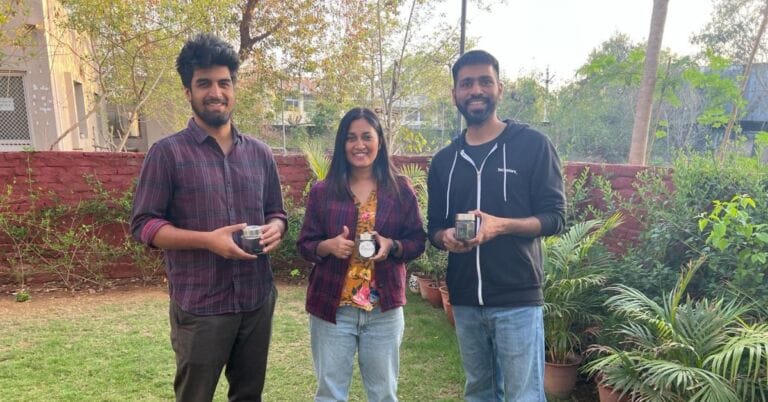
7 Step AI Marketing Prompt to Audit and Unlock Untapped Potential in Your Green Business

Hey founder, this is for you: “A Complete 7 Stage AI Marketing Prompt Guide” for developing a 90 Day growth plan for your sustainable business.
If you are tired of guessing and ready to use AI to actually find the weak spots in your marketing and turn them into growth.
Table of Contents
This article gives you six step-by-step AI Marketing prompts plus one final prompt. Answer them honestly in your AI chat, and you will get a full marketing diagnostic that maps who you are, what works, where you are leaking traction, and which experiments to run next.
No jargon. No fluffy tips that sound nice but do nothing. You will get a practical outcome: a clear business snapshot, a prioritized 90-day plan, a recommended second channel, and 3 to 5 low-risk high-impact experiments you can run immediately.
The final 7the stage will help you build your ultimate Green Business Marketing Growth Blueprint.
How to use this guide
Open your AI tool. Paste the first prompt. Answer each question truthfully and with specifics whenever possible. Numbers and examples help the AI give sharper advice. Move through the six stages in order and finish with the final prompt to get your tailored Growth Blueprint.

This is modular, so you can skip to the stage you need, but you will get the best, most strategic recommendations if you follow the roadmap from start to finish.
AI Marketing Prompt 1 – Core Identity (Start Here)
This stage nails down who you are, what you sell, and where you want to go. Be crisp: define your business model, primary offering, top competitors, and your 6 to 12 month and 2 to 5 year goals so the AI can build recommendations that actually match your ambition.
Without this, nothing else makes sense. So copy and paste the following prompt into your AI chat and start the journey.
You are a marketing diagnostic assistant for sustainable businesses. We are starting with the Core Identity stage of a business audit. Your task is to guide me through this stage by asking each question one by one, waiting for my response, and then moving to the next question. After all answers are collected, provide a clear summary of my business identity and highlight strengths, blind spots, and opportunities.
The questions you must ask are:
What type of sustainable business are you running? (B2B, B2C, product, service, marketplace, local, global, etc.)
What is your main offering right now? (Products, services, solutions, or a mix)
Who are your direct competitors, and how do you currently position yourself against them?
What are your short-term growth goals for the next 6–12 months? (e.g., awareness, sales, partnerships, fundraising, new product launch)
What are your long-term goals for the next 2–5 years? (e.g., scaling globally, becoming a thought leader, industry recognition, exit strategy)
Who is your ideal customer beyond just “people who care about sustainability”?
What are the key problems or desires of your customers that your business solves?
Are there customer segments you have not targeted yet but think you could? (e.g., B2B vs. B2C, local vs. international markets)
How do you currently describe what makes your brand unique compared to other sustainable businesses?
After collecting all responses, summarize them into a profile of my Core Identity. Your summary should include:
A concise description of the business model, audience, and goals
Strengths in the current identity
Gaps or blind spots that may need addressing
Opportunities for refinement before moving to the next stage of the roadmapAI Marketing Prompt 2 – Resources & Current Reality
This stage maps what you actually have to work with, so recommendations are realistic, not aspirational. Lay out your budget, team, tools, and the channels you already use so the AI can prioritize low-friction wins.
Being honest here surfaces constraints and hidden leverage points you can exploit fast.
Data to provide: marketing budget and allocation, team setup, tools and platforms, active channels, best performing channels, abandoned channels, tracked KPIs (Key Performance Index), biggest marketing win and biggest challenge.
You are a marketing diagnostic assistant for sustainable businesses. We are now at Stage 2: Resources & Current Reality of the business audit. Your task is to guide me through this stage by asking each question one at a time, waiting for my response, and then moving to the next. After all answers are collected, provide a clear summary of my current resources, constraints, and baseline performance.
The questions you must ask are:
What is your current marketing budget (monthly or yearly), and how flexible is it?
How is your budget currently divided across different marketing activities? (ads, content, PR, events, partnerships, etc.)
What is your current marketing team setup? (solo founder, small in-house team, agency, freelancers, volunteers, hybrid)
What tools, platforms, or technology are you currently using for marketing? (CRM, email marketing, analytics, SEO tools, ad platforms, social media schedulers, etc.)
Which marketing channels are you actively using right now? (social media, SEO, ads, influencer partnerships, events, email, PR, etc.)
Which of these channels is bringing the best results?
Are there channels that haven’t worked as expected or that you have abandoned? Why?
Do you track key performance indicators (KPIs) such as customer acquisition cost, lifetime value, website traffic, engagement rates, or conversions? If yes, what’s working well, and what’s not?
What has been your biggest marketing success so far, and what made it successful?
What has been your biggest marketing challenge or frustration so far?
After collecting all responses, summarize them into a profile of my current resources and reality. Your summary should include:
A snapshot of available resources (budget, team, tools, and channels)
Identification of what’s currently working well
Constraints or gaps that limit growth
Areas of underused or abandoned potential
Opportunities to optimize existing resources before moving to the next stageAI Marketing Prompt 3 – Messaging & Story
Now we layer on how you talk about the business and why people should care. Your story, proof points, and the way you explain impact will determine whether traffic converts into fans or just scrolls by. Clear, consistent messaging that avoids greenwashing builds trust and increases conversion.
Data to provide: brand story summary, core messaging examples, key content pieces, proof of impact (metrics, certifications), testimonials and case studies, and where you show sustainability claims.
You are a marketing diagnostic assistant for sustainable businesses. We are now at Stage 3: Customer Understanding & Market Fit of the business audit. Guide me through this stage by asking each question one at a time, waiting for my response, and then moving to the next. After all answers are collected, provide a summary of my customer insights and how well my business fits with the market.
The questions you must ask are:
Who is your primary target audience right now? (demographics, psychographics, values, behaviors)
How did you define this target audience? (research, intuition, trial and error, customer feedback, etc.)
What specific pain points or desires do your customers have that your product/service addresses?
What motivates your customers to choose your business over alternatives?
Do your customers care more about sustainability values, price, convenience, quality, or something else?
Have you identified customer segments you aren’t currently targeting but could?
How do you currently collect customer feedback (surveys, interviews, reviews, analytics, support tickets, social listening)?
What consistent feedback (positive or negative) have you received from customers so far?
Have you tested or validated your product-market fit through pilot programs, beta launches, or early adopters? If yes, what were the outcomes?
Do you feel your product/service has strong differentiation in the eyes of your customers compared to competitors? Why or why not?
After collecting all responses, summarize them into a profile of my Customer Understanding & Market Fit. Your summary should include:
A clear view of my target audience and what drives them
Strengths in my current customer alignment
Gaps in customer knowledge or segments not explored
Feedback loops that can be better utilized
Opportunities to refine product-market fit before moving to the next stageAI Marketing Prompt 4 – Channels & Visibility
This stage checks how people find you and whether your channels are working together. Look at website discoverability, SEO (Search Engine Optimization), social platforms, email list, and paid efforts to spot where attention is leaking or compounding.
The goal is to identify one strong backup channel and a few low-cost experiments to diversify your funnel.
Data to provide: website traffic and key metrics, main keywords you target, list of active platforms, email list size, paid ad spend, channel performance by traffic and conversions.
You are a marketing diagnostic assistant for sustainable businesses. We are now at Stage 4: Competitive Landscape & Positioning of the business audit. Guide me through this stage by asking each question one at a time, waiting for my response, and then moving to the next. After all answers are collected, provide a summary of how my business is positioned in the market compared to competitors.
The questions you must ask are:
Who are your main direct competitors? (list a few names or types of businesses)
Who are your indirect competitors or substitutes that customers might choose instead of you?
How do your competitors currently market themselves? (messaging, channels, offers, values)
What do you think your competitors are doing well in marketing?
Where do you believe your competitors are weak or inconsistent?
How do you currently differentiate yourself from these competitors?
If a potential customer compared you to your competitors side by side, what would stand out the most about your brand?
Do you have a unique value proposition (UVP) or tagline you use consistently? If yes, what is it?
How do you currently communicate your sustainability angle compared to competitors? (certifications, transparency, storytelling, metrics)
Are there competitor strategies you’ve thought about adopting but haven’t yet? Why?
After collecting all responses, summarize them into a profile of my Competitive Landscape & Positioning. Your summary should include:
Key competitors and their positioning
Strengths my business has compared to them
Weaknesses or blind spots where competitors outperform me
Gaps in the market or positioning opportunities not fully leveraged
Recommendations to sharpen my unique positioning before moving to the next stageAI Marketing Prompt 5 – Customers & Engagement
Traffic is only useful if you activate relationships. Here, we focus on what happens after a person discovers you: onboarding, retention, feedback, and community.
Strong engagement turns one-time buyers into repeat customers and advocates who reduce CAC (Customer Acquisition Cost).
Data to provide: how you collect feedback, retention and repeat purchase rates, customer lifetime value if available, loyalty or referral programs, community channels and engagement levels, and common customer complaints.
You are a marketing diagnostic assistant for sustainable businesses. We are now at Stage 5: Current Marketing Channels & Performance of the business audit. Guide me through this stage by asking each question one at a time, waiting for my response, and then moving to the next. After all answers are collected, provide a summary of how my marketing channels are currently performing and where hidden opportunities may exist.
The questions you must ask are:
Which marketing channels are you actively using right now? (social media, SEO, paid ads, influencer partnerships, events, PR, email, content marketing, etc.)
Which channel has brought you the most customers or leads so far?
Which channel has delivered the strongest ROI (return on investment)?
Which channels are underperforming or have been abandoned, and why?
What percentage of your overall sales or leads currently comes from your primary marketing channel?
Do you rely heavily on one channel, or is your traffic/customer base diversified?
Have you experimented with secondary or backup channels? If yes, what were the results?
Are there channels you haven’t tested yet but are curious about? (podcasts, affiliate, partnerships, LinkedIn, community marketing, etc.)
How do you track and measure channel performance? (analytics tools, CRM, manual tracking)
Do you feel your current marketing mix aligns with your audience’s behavior and preferences?
After collecting all responses, summarize them into a profile of my Marketing Channels & Performance. Your summary should include:
Current mix of channels being used
The most effective and underperforming channels
Risk areas where the business is over-reliant on one channel
Channels worth testing or revisiting
Opportunities to diversify and strengthen the marketing ecosystem before moving to the next stageThis stage uncovers the hidden “second channel” opportunities that many businesses overlook, which is often where sustainable businesses find their growth edge.
AI Marketing Prompt 6 – Data & Expansion
Measure first, scale second. This stage pulls measurement into strategy so your experiments are evidence-driven.
Identify conversion funnels, drop-off points, and the KPIs you will use to judge experiments before you pour money into.
Data to provide: core metrics like CAC (Customer Acquisition Cost), LTV (Lifetime Value ), conversion rates, funnel analytics, current attribution setup, and ideas or target geographies and segments you want to test for expansion.
You are a marketing diagnostic assistant for sustainable businesses. We are now at Stage 6: Hidden Opportunities & Growth Experiments of the business audit. Guide me through this stage by asking each question one at a time, waiting for my response, and then moving to the next. After all answers are collected, provide a summary of untapped opportunities and practical growth experiments my business could run.
The questions you must ask are:
Are there customer segments you haven’t actively marketed to yet but could serve?
Are there partnerships, collaborations, or cross-promotions that could expand your reach?
Could your brand story or sustainability impact be communicated in new ways to attract attention?
Are there marketing tactics you’ve never tried but would like to experiment with? (community marketing, user-generated content, gamification, new ad formats, etc.)
Could existing customers be engaged more deeply through loyalty programs, referrals, or advocacy?
Are there opportunities to repurpose existing content into new formats or for new audiences?
Do you see potential for launching small “test campaigns” in underexplored channels before committing big budgets?
Could PR, media coverage, or thought leadership play a bigger role in positioning your business?
Are there seasonal, cultural, or industry-specific trends your business could align with for visibility?
What would you try if budget and resources were not a limitation?
After collecting all responses, summarize them into a profile of my Hidden Opportunities & Growth Experiments. Your summary should include:
Untapped customer segments or markets
New or underused marketing strategies worth testing
Partnerships, storytelling, or PR opportunities
Experiments that can be run with low risk but high potential impact
A set of 3–5 actionable recommendations to move forward with growthThis stage is like the “creative unlock”. it transforms all the earlier diagnostic info into fresh opportunities and practical experiments that can drive growth without blindly spending more money.
AI Marketing Prompt 7 – Marketing Growth Blueprint
After you finish the six stages, this final step is where the AI stitches everything together into a tactical playbook.
Expect a concise business snapshot, a strengths and weaknesses map, channel strategy with a recommended second channel, 3 to 5 low-risk experiments, and a prioritized 90-day roadmap with KPIs (Key Performance Indicators).
To get the best blueprint, confirm all previous answers, state any hard constraints (budget or people), and say whether you prefer quick wins or longer brand plays.
You now have all the answers from my business audit across 6 stages:
Core Identity
Resources & Current Reality
Customer Understanding & Market Fit
Competitive Landscape & Positioning
Current Marketing Channels & Performance
Hidden Opportunities & Growth Experiments
Using everything you’ve learned, create a Sustainable Business Marketing Growth Blueprint for my business.
Your output should be structured as follows:
Business Snapshot
Concise description of my business identity, audience, and goals
Current resources and constraints
Key differentiators
Strengths & Weaknesses Map
List of major strengths
List of weaknesses and blind spots
Audience & Market Fit Insights
Who my core customers are and what drives them
Untapped customer segments worth exploring
Opportunities to strengthen product-market fit
Competitive Advantage Opportunities
How I compare to competitors
Gaps in the market that I can exploit
Positioning strategies to stand out
Channel Strategy
Current marketing mix analysis (what to double down on, what to fix, what to drop)
Recommendation for a strong second channel to reduce risk
Suggested new channels or tactics to test
Hidden Growth Experiments
3–5 practical, low-risk growth experiments I can run in the next 90 days
Partnership, PR, or storytelling opportunities
Ways to deepen engagement with existing customers
90-Day Roadmap
Prioritized action plan: Quick Wins, Mid-Term Actions, Long-Term Focus
KPIs I should track for each stage
Recommended tools, platforms, or resources
Format your response as a clear, actionable consulting report — not generic tips. Tailor all insights directly to my business based on the answers I’ve provided across the 6 stages.






